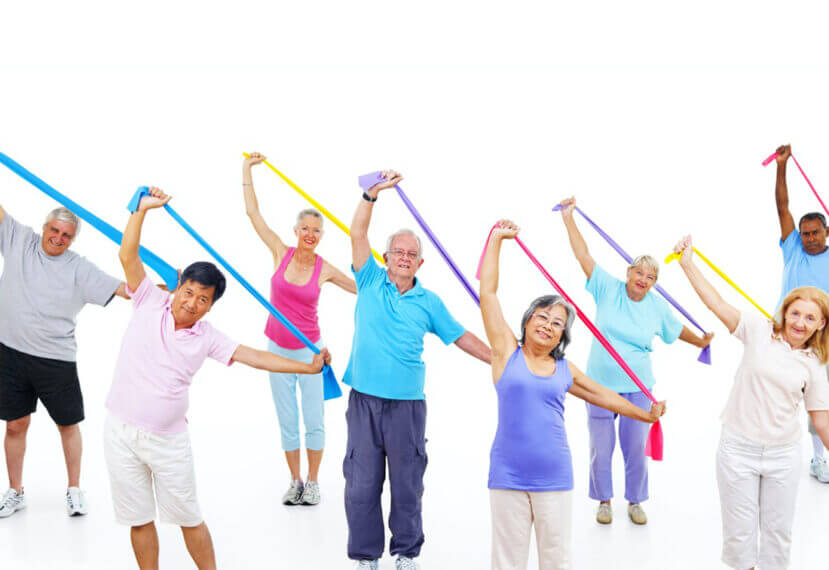Playback speed:
Physical exercise has positive effects on the wellbeing of persons living with dementia, whether the exercise is done for recreation or as therapy. It can be done as the main focus of an activity, or as part of other activities that involve a heightened level of physical movement, such as gardening or dance.
Benefits of Physical Exercises
Physical activity is positively linked to overall health in general. Though research on the link between exercise and the wellbeing of persons living with dementia is still developing, current research has shown that exercise is linked to the improvement of physical functioning in persons living with dementia.1 It also has positive correlations with improvements in cognition, mood, agitation, and functional ability for persons living with dementia in some settings.2
“Aim for 150 minutes of moderate to vigorous every week for a healthier you.”
As recommended by the Health Promotion Board.
Tips For You!
Why Exercise?
Get Moving!
Source: ForgetUsNot Initiative by LIEN Foundation, Khoo Teck Puat Hospital, & Dementia Singapore
Source: ForgetUsNot Initiative by LIEN Foundation, Khoo Teck Puat Hospital, & Dementia Singapore
Considerations When Choosing and Adapting Physical Exercises
As with any other activity that persons living with dementia participate in, it is important to know certain details about the person with dementia when choosing and adapting the activity for them. These details include the person’s preferences, interests, age, history, and stage of dementia. Read more about factors to consider when choosing appropriate activities on Recreational Activities.
Safety
While taking part in physical exercises, it is important for these persons and their care team to be mindful of their risks to a reasonable degree when selecting physical activities to do. For example, since a higher proportion of persons living with dementia are older in age, they may have a higher fall risk. The activity should be modified such that risk is reduced to a reasonable level.
Attention should also be paid to the environment where persons living with dementia do their physical exercises in order to ensure both their safety and the conduciveness of their environment to their experience of the exercise. Find out more from our articles on Dementia-Inclusive Environments.
Follow These Guided Exercises!
Here are some videos on guided exercise routines that care professionals and caregivers can use to guide persons living with dementia.
Videos from Dementia Singapore
These are videos by the New Horizon Centres (NHCs) of Dementia Singapore (formerly known as Alzheimer’s Disease Association) showing simple exercise routines. Persons living with dementia can continue to participate in physical exercises at home by watching and following the following videos!
Stay Home Workouts with NHC Bukit Batok
Workout Song – “Rasa Sayang”
Workout Song – “Ai De Ni Ya He Chu Xun”
Workout Song – “Gao Shan Qing”
Workout Song – “Wang Chun Feng”
Stay Home Workouts with NHC Tampines
Group 1
Sitting 1
Sitting 3
Tara Band 1
Stay Home Workouts with NHC Toa Payoh
Group 1
Group 2
Videos from Dementia-Friendly Singapore
These are videos produced by the Dementia-Friendly Singapore movement on exercise routines for persons living with dementia.
Standing Psychomotoric Exercise
Seated Psychomotoric Exercises
Tell us how we can improve?
- Pitkälä, K., Savikko, N., Poysti, M., Strandberg, T., Laakkonen, M. (2013). Efficacy of physical exercise intervention on mobility and physical functioning in older people with dementia: A systematic review. Experimental Gerontology, 48(1), 85-93. https://doi.org/10.1016/j.exger.2012.08.008
- Brett, L., Traynor, V., Stapley, P. J. (2016). Effects of physical exercise on health and well-being of individuals living with a dementia in nursing homes: a systematic review. Journal of the American Medical Directors Association, 17(2), 104-116.




